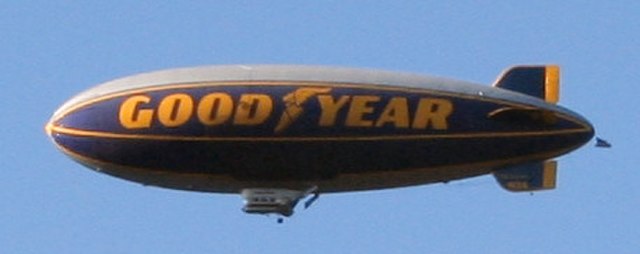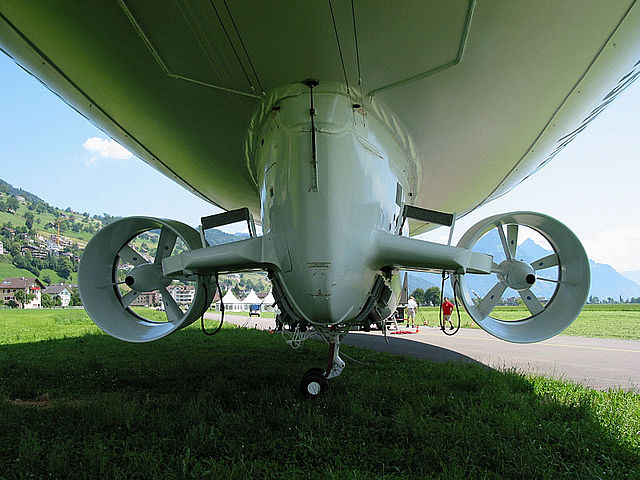The British NS class non-rigid airships were the largest and last in a succession of "blimps" that served with the Royal Naval Air Service during World War I; developed from experiences gained with earlier classes to operate off the east coast of Britain on long-range patrols. Despite early problems, examples of the class went on to break all flying records for non-rigid airships, and the type became regarded as the most efficient of its kind.
NS class airship
N.S.8 of the NS class portrayed in 1919.
Model at Chatham Dockyard, Kent
A blimp (/blɪmp/), or non-rigid airship, is an airship (dirigible) without an internal structural framework or a keel. Unlike semi-rigid and rigid airships, blimps rely on the pressure of the lifting gas inside the envelope and the strength of the envelope itself to maintain their shape. Blimps are known for their use in advertising, surveillance, and as observation platforms due to their maneuverability and steady flight capabilities.
The Spirit of Goodyear, one of the iconic Goodyear Blimps
Steerable ducted fans on a Skyship 600 provide thrust, limited direction control, and also serve to inflate the ballonets to maintain the necessary overpressure.
A modern blimp from Airship Management Services showing a strengthened nose, ducted fans attached to the gondola under the hull, and cable-braced fins at the tail
Advertising blimp landing at local airport in New Jersey







